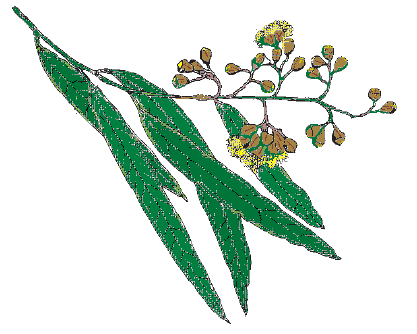This beautiful group of shrubs, vines and trees are in the Order Myrtales and Family Myrtaceae which means they are a close relative of the Gum Tree (Eucalyptus) yet there are no native Australian species of Metrosideros.
 |
| NZ Xmas Bush or pōhutukawa |
- Mearnsia, 24 or 25 species, trees, shrubs (some epiphytic) and vines, with red, pink or white flowers;
- Metrosideros, 26 species, trees and shrubs, flowers mostly red, but some species have yellow or white flowers;
- Carpolepis, 3 species of rainforest trees from New Caledonia, all with bright yellow flowers.
The name Metrosideros comes from Greek - metra meaning "heartwood" and sideron meaning "iron! Hence the term ironwood as the it was used in carving by the original New Zealanders the Maori! The Maori also named Metrosideros excelsa as the pōhutukawa which means "sprinkled with spray" - as it describes the plants habit of clinging to salt water cliff faces and being constanly exposed to the marine environment. In mid-summer in the southern Hemisphere the pōhutukawa is covered in flowers and hence the easier name of New Zealand Xmas Bush! The photo above is of metrosideros excelsa and even within this species the leaf colour can vary from leathery grey to dark almost shiny green! Normally the underside is always a silvery colour.
The other species (also NZ) of NZ Xmas Bush is metrosideros kermadecensis which is mainly sold today as the varigated form with also a wide variety of colours.
 |
| metrosideros kermadecensis |
 |
| ōhiʻa lehua or Metrosideros polymorpha |

I thought metrosiderous collina was the Hawaiian one called Ohi'a Lehua or something?
ReplyDeleteMetrosideros polymorpha was originally classified as a variety of Metrosideros collina, native to Rarotonga, Tahiti, and other islands of Polynesia, but now is generally accepted as a distinct Hawaiian endemic species. The name tag of Ohi'a Lehua was originally attached metrosideros collina as a result.
Delete